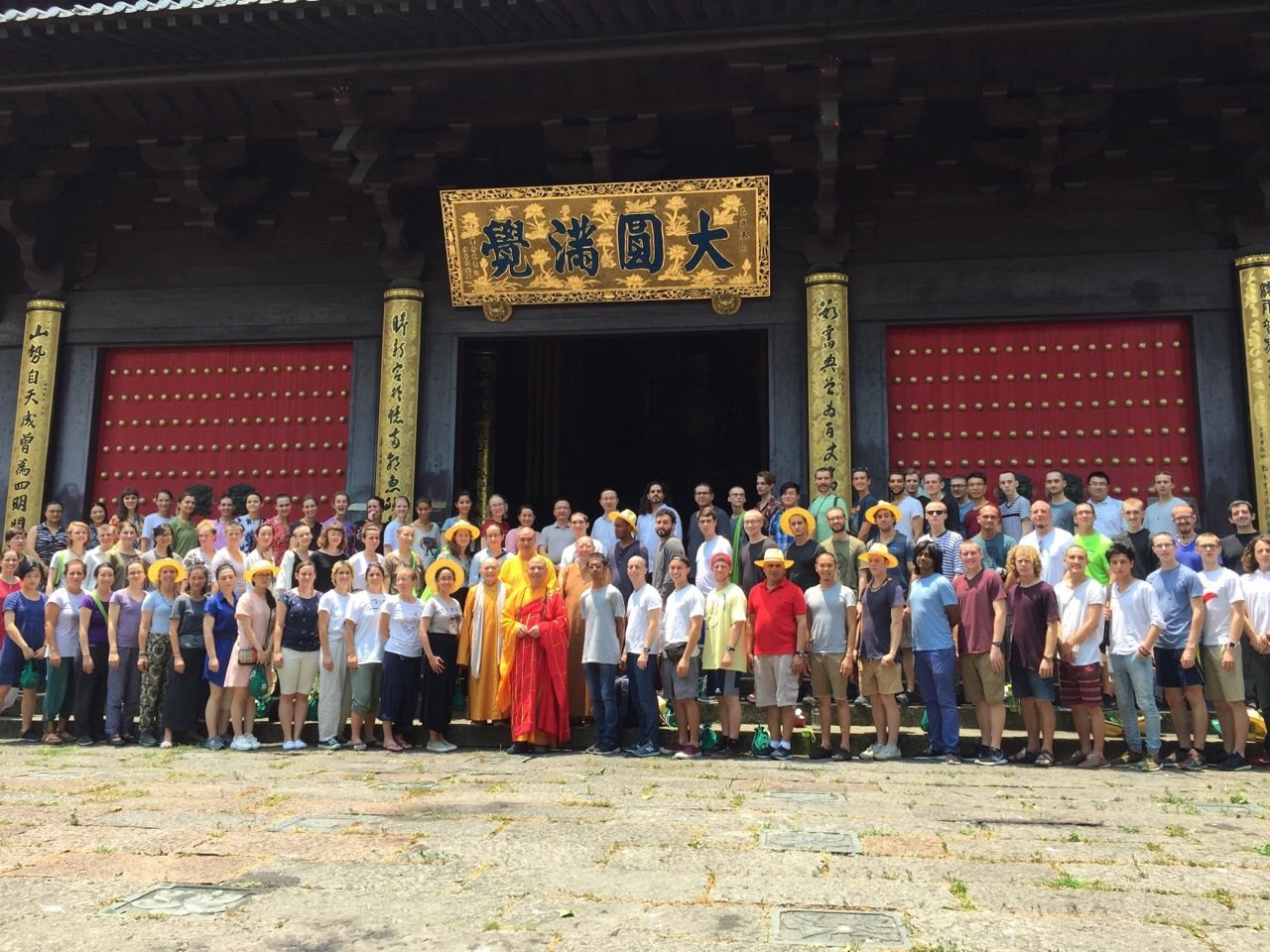Student Reflections
Beyond the Classroom: Five Questions with a Major

Students and teachers who took part in the Woodenfish Foundation’s 2017 Humanistic
Buddhism Monastic Life Program at Xinyin Temple near Ningbo, Zhejiang province, China/
photo courtesy of Clara Jones, '18.
Ben Ginsburg ’18: The Museum of Man, San Diego, exhibits internship
- Tell us a bit about your internship at the Museum of Man in San Diego. What is the
museum’s focus, and what activities did you participate in as an intern?
- Ben: In the summer of 2017, I was the exhibits intern with two projects that culminated
in a presentation given to key players at the medium-sized anthropology museum. As
an anthropology museum, they define their role in society as an institution that "collects,
preserves, interprets, and communicates evidence of human development and creativity"
so that they can "advance understanding and respect for all cultures" (musemofman.org). My two projects, which were assigned based on the museum's need to evaluate their
in-house exhibits, involved conducting timing and tracking, as well as creating a
survey that I administered. Finally, I had to analysis the data I collected before
putting together a sixteen-page report that I presented to several departments.
- Ben: In the summer of 2017, I was the exhibits intern with two projects that culminated
in a presentation given to key players at the medium-sized anthropology museum. As
an anthropology museum, they define their role in society as an institution that "collects,
preserves, interprets, and communicates evidence of human development and creativity"
so that they can "advance understanding and respect for all cultures" (musemofman.org). My two projects, which were assigned based on the museum's need to evaluate their
in-house exhibits, involved conducting timing and tracking, as well as creating a
survey that I administered. Finally, I had to analysis the data I collected before
putting together a sixteen-page report that I presented to several departments.
- How did you hear about this internship?
- Ben: I found the internship on their website and waited three months for the position
to be posted. As a competitive unpaid internship, they encourage you to apply promptly.
- Ben: I found the internship on their website and waited three months for the position
to be posted. As a competitive unpaid internship, they encourage you to apply promptly.
- How did learning within the classroom transfer to what you experienced at the Museum
of Man?
- Ben: At first, you would assume the classroom learning that transferred to my internship
would only be from my anthropology classes, but that is not the case. While I entered
the internship with experience from anthropology classes on ethnographic research
methods and the history of anthropology museums, my religious studies courses also
led me to my success. For instance, presenting research papers in Professor Howlett
and Professor Kent’s courses not only made me less nervous to present my findings
to the heads of the exhibits, marketing, and education departments, but the classroom
presentations taught me the small details that transform a good presentation into
a great one. Further, the slow process of reading dozens upon dozens of sources for
religious studies research papers instilled in me a discipline that inspired me when
I was slowly collecting data over the summer with no immediate reward in sight.
- Ben: At first, you would assume the classroom learning that transferred to my internship
would only be from my anthropology classes, but that is not the case. While I entered
the internship with experience from anthropology classes on ethnographic research
methods and the history of anthropology museums, my religious studies courses also
led me to my success. For instance, presenting research papers in Professor Howlett
and Professor Kent’s courses not only made me less nervous to present my findings
to the heads of the exhibits, marketing, and education departments, but the classroom
presentations taught me the small details that transform a good presentation into
a great one. Further, the slow process of reading dozens upon dozens of sources for
religious studies research papers instilled in me a discipline that inspired me when
I was slowly collecting data over the summer with no immediate reward in sight.
- What was your most memorable experience or most valuable takeaway from participating
in Museum of Man’s internship program?
- Ben: After putting in hours of hard work (ten hours alone were spent covertly following
visitors around an exhibit about cannibalism), it was delightful that my presentation
to the exhibits department was considered by my supervisor to be an “impressive accumulation
of data with thoughtful analysis.” My hard work was consistently appreciated by the
employees in the department to the point that one of them wanted to laminate my presentation.
- Ben: After putting in hours of hard work (ten hours alone were spent covertly following
visitors around an exhibit about cannibalism), it was delightful that my presentation
to the exhibits department was considered by my supervisor to be an “impressive accumulation
of data with thoughtful analysis.” My hard work was consistently appreciated by the
employees in the department to the point that one of them wanted to laminate my presentation.
- If other students would like to be part of this experience, how would they do so?
- Ben: They should check the website for availability. If you want to get an inside
scoop, you could email the volunteer coordinator Sharleen Eusebio about the anticipated
openings. She might know more; when museum departments need interns, they contact
Sharleen.
- Ben: They should check the website for availability. If you want to get an inside
scoop, you could email the volunteer coordinator Sharleen Eusebio about the anticipated
openings. She might know more; when museum departments need interns, they contact
Sharleen.